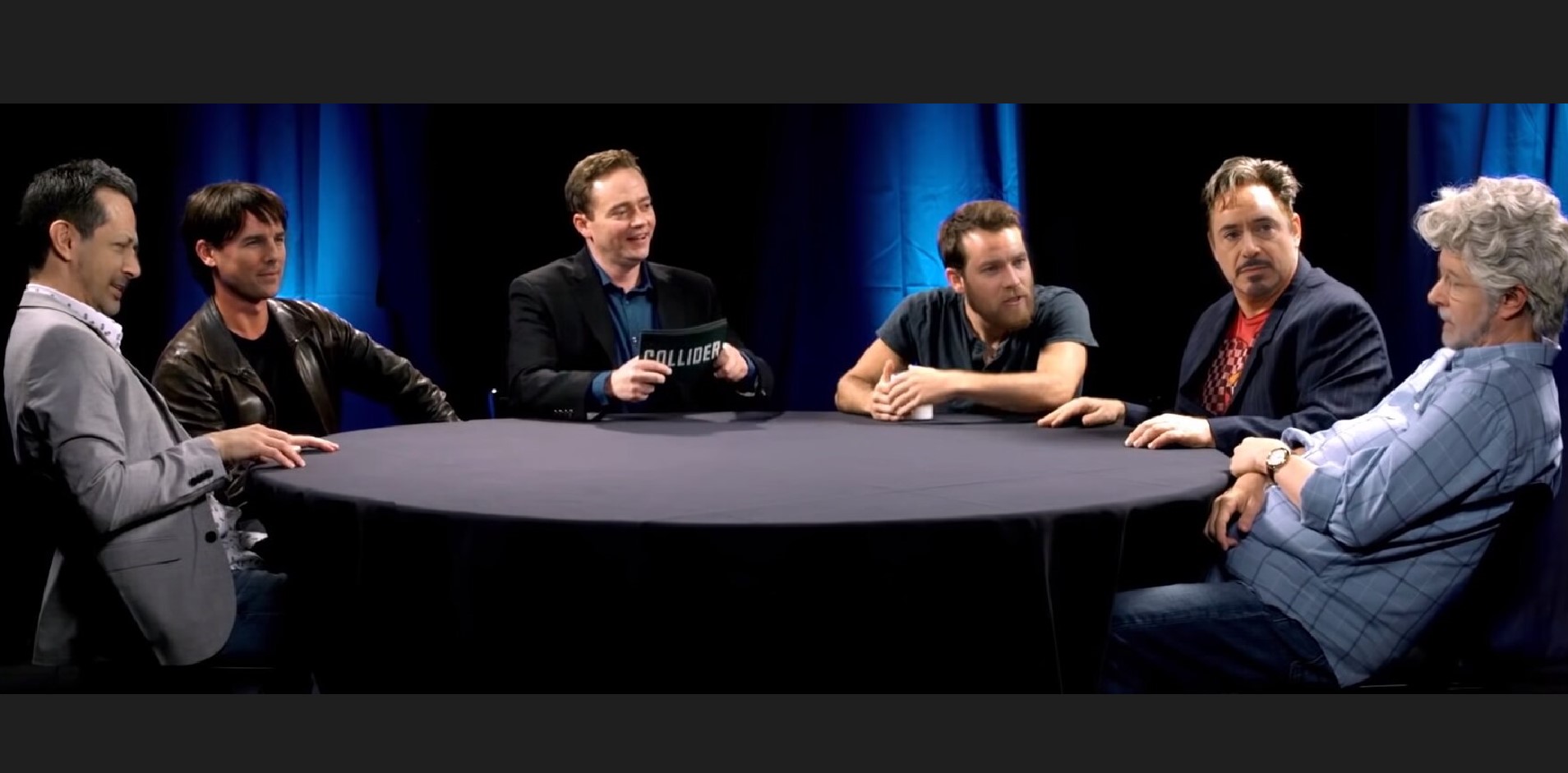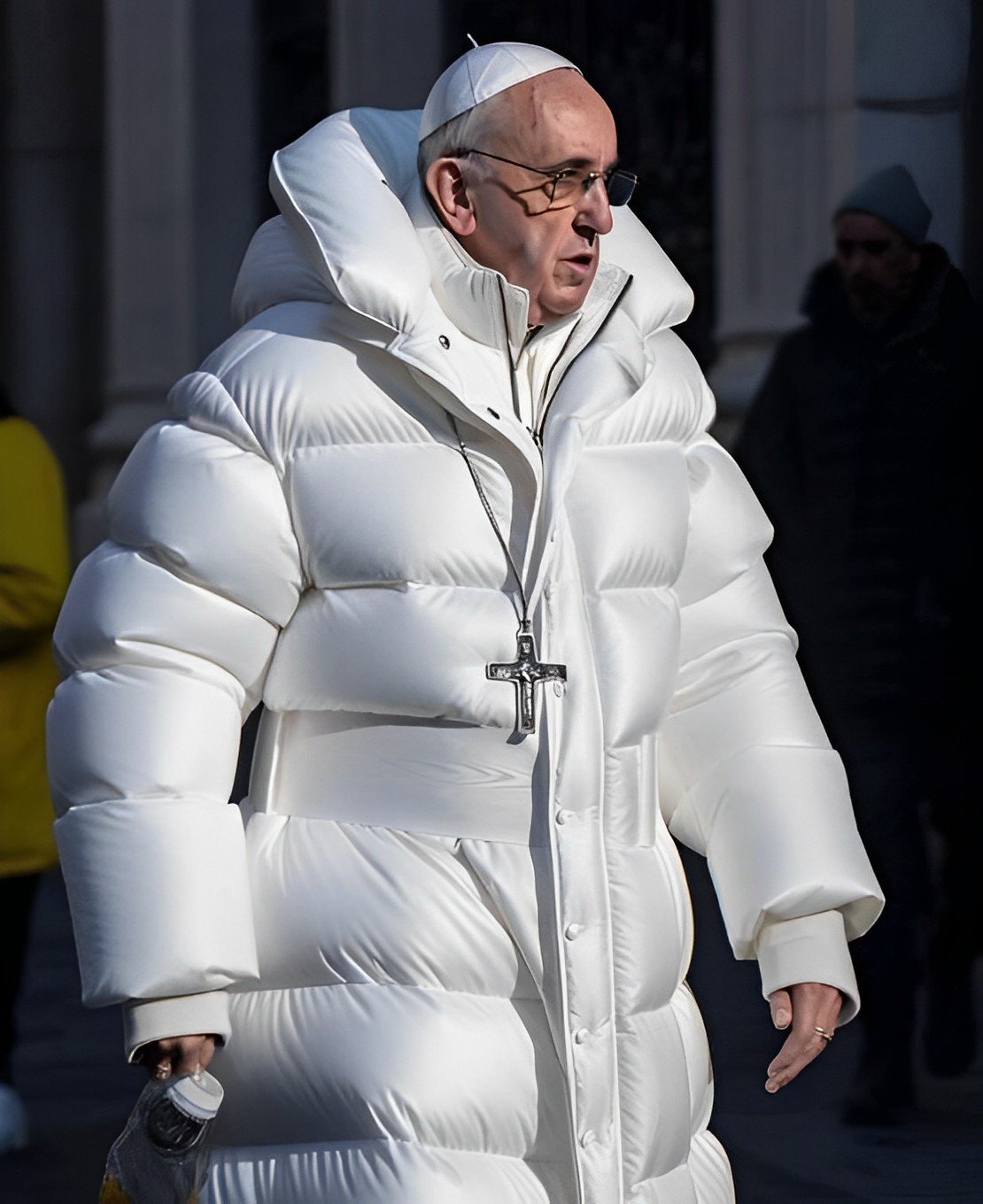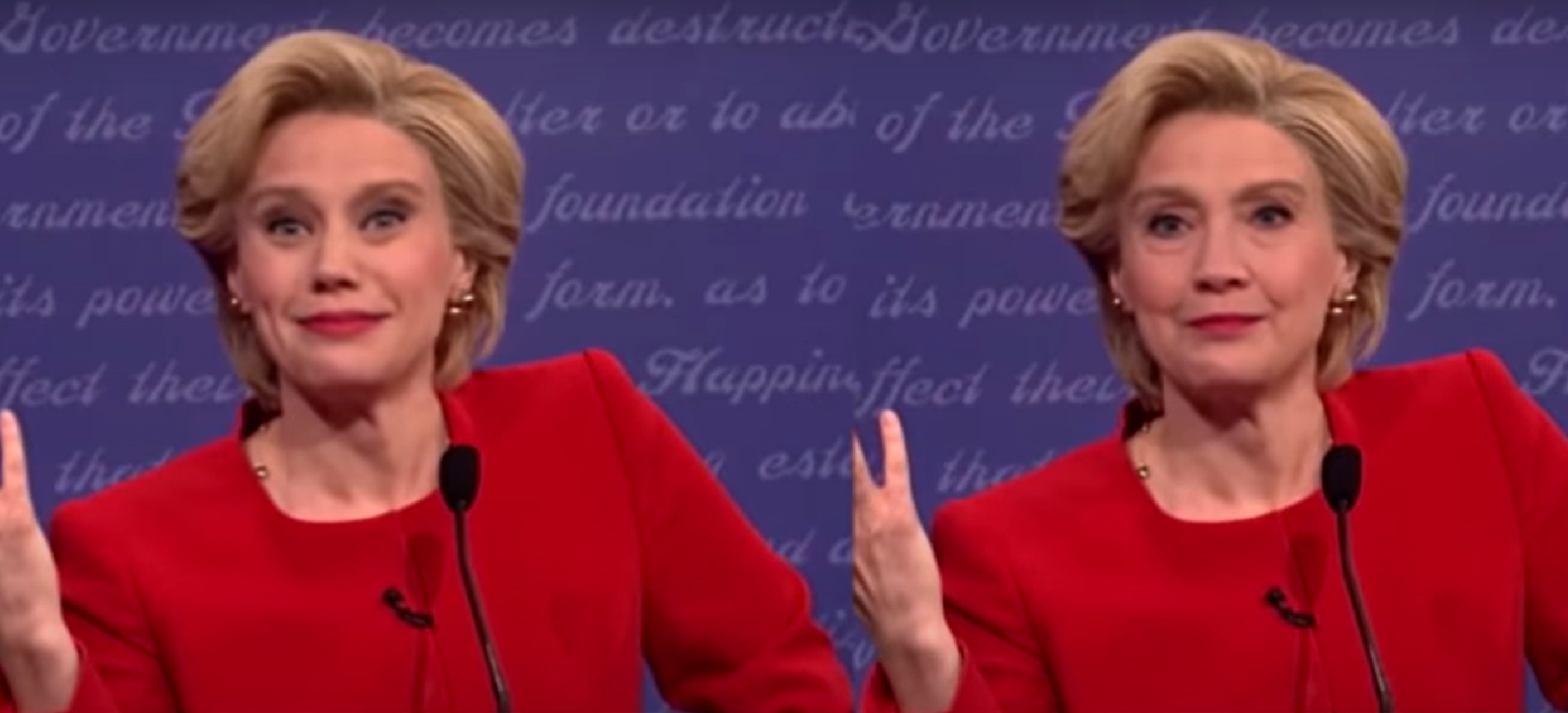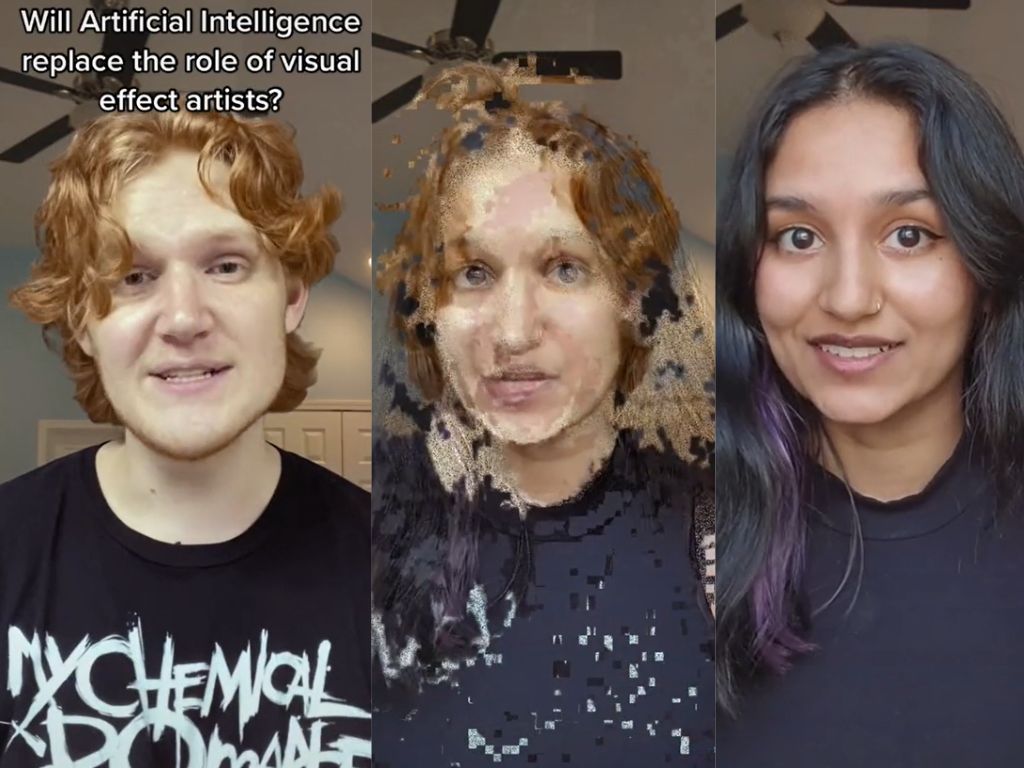Digital Deception: 30 Images And Videos That The Internet Tricked Us Into Believing Were Real
Nowadays, it’s ordinary for us to come across something online and believe what we’re seeing and consuming. Often, we don’t even think for ourselves if the images and information could be untruthful. Deepfakes, AI, and Photoshop are just some of the prominent technologies that aid in this deception.
With all of the digital deception circulating online, it’s gotten to the point that we take everything we see at face value. This can have dangerous consequences. So, here are 30 examples of how people were fooled by “fake” or deceiving internet media.
Tom Cruise Deepfake
We’re positive that you’ve probably stumbled across the TikTok videos of Tom Cruise’s deepfake. After all, the TikToker @deeptomcruise has 5.2 million followers and continues to deceive and shock people.

Source: Tumblr
The Hollywood actor behind this TikTok account is named Miles Fisher, a well-known Tom Cruise doppelganger. It’s very uncanny how much the two look alike, even down to their mannerisms and gestures. But, we all know that it’s not actually Tom Cruise, just an actor using deepfake technology for fun. Fooled? Yes.
Donald Trump’s “Fake” Arrest
On March 20, 2023, Twitter user @EliotHiggins created a viral photo of Trump getting arrested by police. However, it wasn’t actually Trump, but a deepfake of the former U.S. President. Higgins even shared that he used an AI tool called Midjourney, but people still bought it.

Source: arstechnica.com
Higgins told the Associated Press, “I had assumed that people would realize Donald Trump has two legs, not three.” If you look closely enough, you will notice that it does subtly appear he has a third leg in the enhanced photo. Obviously, most people didn’t even bother to zoom in!
Boris Johnson’s “Arrest”
Here is another example of AI being used on an image. In this case, the deceiving photo of previous U.K. Prime Minister Boris Johnson shows him getting arrested.

Source: Reddit
The image was created using the AI technology Chat GPT/DALLE-2. This AI-generated photo proves that digital manipulation can create a riff in reality, spreading images that are not rooted in any semblance of truth. Be careful what you believe because, in most cases, it’s not what you think it is. Especially online.
Jim Carrey In ‘The Shining’
We know that Jim Carrey was never in Stanley Kubrick’s 1980 film The Shining, nor did he ever play the iconic madman Jack Torrance (actually played by Jack Nicholson). But, this deepfake is seriously convincing. Maybe a bit too convincing.

Source: Ctrl Shift Face/ YouTube
Deepfake crossovers in movies are quite popular these days, and this Jim Carrey example certainly isn’t the first. All we know is that we would love to see Carrey step into that role – he surely would nail it.
‘Spider-Man: No Way Home’ With Tobey Maguire
It’s undeniable that everybody has their favorite version of Spider-Man, whether it’s Tobey Maguire, Andrew Garfield, or Tom Holland. In this example, Tom Holland’s face is replaced with Tobey Maguire’s and it’s creepily realistic!

Source: Shamook/ YouTube
While the swapping of faces is almost too real, it’s also done very subtly. Deepfake creator Shamook on YouTube chillingly succeeded with this AI rendering of Maguire in the Spider-Man: No Way Home trailer. It’s beyond incredible what can be done with technology today and how it impacts the future of filmmaking.
‘Pulp Fiction’ With Jerry Seinfeld
Well, this one is too on the nose. Imagine if comedian Jerry Seinfeld had starred in Quentin Tarantino’s 1994 cult classic Pulp Fiction? That’s definitely an interesting idea. Here, creator DesiFakes replaces Bruce Willis’ face with Seinfeld’s in one of the most notable scenes from the film.

Source: DesiFakes/ YouTube
You’re probably thinking: how is this so realistic? There’s a few key components going on here. Of course, the visuals are important, but it’s the audio editing and perfectly timed audience laughter that lend to the credibility of this deepfake.
Luke Skywalker Deepfake In ‘The Mandalorian’
Naturally, seeing Luke Skywalker appear in The Mandalorian Season Two finale must have caused quite a stir in the Star Wars fandom. No matter how realistic the more youthful Mark Hamill looked at first, fans didn’t hesitate to share the problems they spotted with the AI recreation.

Source: Shamook/ YouTube
Done by none other than the YouTuber Shamook, he shared that he was actually hired to create the deepfake. In fact, the revolutionary visual effects company, Industrial Light and Magic behind the early effects of the Star Wars films, scouted Shamook for the job. Pretty crazy!
Keanu Reeves Deepfake
Tom Cruise isn’t the only celebrity who has their own deepfake account. Deepfake Keanu Reeves does, too. @Unreal_Keanu on TikTok has 8.8 million followers and mostly shows “Keanu” doing very Keanu activities. It’s hilarious and spot-on.

Source: unreal_keanu/ TikTok
This deepfake account is primarily used for comedic purposes, but it can pose a larger implication for celebrities themselves. Companies can use deepfake technology on actors to make it seem as if they’re endorsing their products when they actually aren’t. While we are aware this isn’t actually Keanu Reeves, it still feels real enough.
Korean Newscaster Kim Joo-Ha’s Deepfake
Most deepfake examples on the internet have been presented as being used for entertainment and parody purposes. It’s used to push deep learning technology’s limits, with the possibility of being integrated into daily media.

Source: MBN News/ YouTube
So, last year, when a deepfake of Korean newscaster Kim Joo-Ha circulated, it made people think about how deepfakes could be implemented into the mainstream. While the Korean news channel MBN used its own version of Kim Joo-Ha and explicitly stated it up front, it’s frightening to think that newsreaders might not even be needed in the future.
Lynda Carter’s ‘Wonder Woman’
Today, a majority of films being put out are reboots and remakes. It’s only natural that when fresh actors are cast in a film with an iconic role comparisons between both actors will arise. Deepfake technology has grown so complex in the modern film climate. People even replace one of the actors in a specific scene or sequence for observational purposes.

Source: DeepFaker/ YouTube
In this example, the actress Lynda Carter (who starred in the ‘70s TV show Wonder Woman), is used in lieu of Gal Gadot, our newest Wonder Woman. This mash-up created by the YouTuber, DeepFaker, allows us to imagine what the 2017 Wonder Woman remake would look like if Carter starred in it.
Obama’s PSA
You may be surprised this wasn’t really Barack Obama. Actually, the most persuasive examples of deepfake use impersonators to realistically copy the original person’s gestures, voices, and movements.

Source: Buzzfeed Video/ YouTube
Comedian, actor, and director Jordan Peele was involved with this particular one. Using After Effects CC and FakeApp, Peele’s mouth was placed over Obama’s, subsequently utilizing his jawline instead of Obama’s. Then, for 50-plus hours, the footage was refined through automatic processing, and voila – this is the result. Such high-profile figures like Obama are often the source of these deepfakes.
Zuck Speaks Out
Artist Bill Posters shared this video on Instagram (which, ironically, is owned by Facebook). In the video, a deepfake Zuckerberg talks about how Instagram’s users are essentially owned by them.

Source: Bill Posters/ Instagram
Created using Canny AI’s VDR (video dialogue replacement) software, the purpose of the video was to raise awareness about how social media can manipulate people. It’s already fairly convincing and seems as if the real Mark Zuckerberg is speaking and the actor doing the voice work is impressive.
Bill Hader’s Deepfake Impersonations
Bill Hader is already a talented comedian and impersonator, so when deepfake technology is used to make his face morph into Al Pacino and Arnold Schwarzenegger, it’s even more convincing. This whole video is a bit scary yet also very funny.

Source: Ctrl Shift Face/ YouTube
The Ctrl Shift Face team clearly wasn’t doing anything deceiving with this content, they just made Hader’s impersonations appear more realistic and uncanny. It’s also a prime example of how the right actor can accurately and spookily recreate the voice and mannerisms of the original source.
Art Meets Artificial Intelligence…And Salvador Dalí
Salvador Dalí comes back to life in this deepfake video for Florida’s Dalí Museum. The AI recreation resembles Dali so vividly that it’s almost unsettling (but also really cool).

Source: The Dali Museum/ YouTube
The Dalí Museum put on an exhibit called “Dalí Lives” where Dalí would be the host. Dalí – who frequently pulled off his own publicity stunts – would have thrived in this environment. The exhibit was miraculously and tirelessly created by combing through 6,000 frames from past video interviews, then processing them through 1,000 hours of machine learning. The last step was to overlap Dali’s face with an actor’s to achieve a realistic effect.
An Imaginary Roundtable Full Of Deepfakes
Streaming services are having a big impact on the film and television landscape. Theatres are battling the streaming companies for what content is being shown since more and more people are staying home to watch entertainment. Clearly, the media environment is changing in monumental ways.

Source: Collider Extras/ YouTube
This Collider video features deepfakes of famous actors Tom Cruise, Ewan McGregor, Jeff Goldblum, Robert Downey Jr., and director George Lucas. It’s pretty hilarious how spot-on and realistic each of the deepfakes is and it’s as if the real figures are actually present in the room.
Pope Francis Dons A Huge Puffer Jacket
Here’s just another example of an image that looks completely realistic but is just a product of AI technology. Pope Francis was “photographed” sporting a gigantic, long, and white puffer jacket with a crucifix dangling from his neck. Too good to be true? Yes.

Source: Imgur
Created by Midjourney, an AI image generator, the photo spread like wildfire on social media. Even Chrissy Teigen posted about it on Twitter to her 12.9 million followers. Internet users were going crazy over the AI-generated image, boasting excitement with the possibility of Pope Francis wearing a jacket like that.
Hillary Clinton’s Deepfake SNL Appearance
On an episode of Saturday Night Live (SNL) one of the show’s main cast members, Kate McKinnon, impersonates former Secretary of State, Hillary Clinton. The video from creator derpfakes on YouTube shows a side-by-side comparison of McKinnon’s original version and the deepfake version with Clinton.

Source: derpfakes/ YouTube
It’s remarkable because there are no visible traces of Clinton’s rendered face. As deep learning technology becomes more advanced, recognizing what is and isn’t a deepfake will only bring about an increasing sense of concern.
Kobe Bryant’s Appearance In A Kendrick Lamar Music Video
Last year, one of Kendrick Lamar’s music videos “The Heart Part 5” blew up on the internet. The video features the artist’s face morphing into other faces of famous figures, but nobody was expecting the face of NBA player Kobe Bryant to be in the mix.

Source: Reddit
Due to the timing of the athlete’s tragic passing, the video made a massive impact on viewers. Within the first couple of days, it garnered millions of views. Lamar used deepfake technology with DEEP VOODOO to pay a special tribute to the late Laker icon. The facial rendering occurs so seamlessly that it really looks like Bryant.
It’s Not Morgan Freeman
Well, this is just plain terrifying. The beginning of the video starts with what looks like Morgan Freeman standing in front of a black background talking to the camera. He states, “ I am not Morgan Freeman and what you see is not real.” He continues, “What if I were to tell you that I am not even a human being? Would you believe me?”

Source: Diep Nep/ YouTube
The Morgan Freeman deepfake is actually so creepily realistic that it’s unsettling. One of the top commenters wrote, “I genuinely fear for our future.” Yet again, this is just another testament that as AI technology advances, the line between reality and fiction blurs. Don’t trust what you see, people.
Jim Meskimen’s Deepfake Impressions
Actor, comedian, and voice-over artist Jim Meskimen blew up on the internet with his incredible TikToks impersonating famous Hollywood stars using deepfake technology. In the videos, he is seen sharing a poem he wrote himself with the voices of Robert De Niro, Anthony Hopkins, George Clooney, Christopher Walken, Tommy Lee Jones, and many others.

Source: jimmeskimen/ TikTok
Meskimen’s impressions are absolutely flawless, and paired with the faces of each actor, you could easily be fooled. Seamlessly, his face shifts from actor to actor in an eerie yet incredible manner. He had some assistance from the U.K.-based YouTuber Shamook, who is at the top of the deepfake game.
The 2019 Nancy Pelosi Deepfake
Deepfake technology has actually been around for a while, and this example went back to 2019. In the realm of politics, deepfake is becoming increasingly dangerous to utilize in political campaigns, or for other disingenuous reasons.

Source: CBS Mornings/ YouTube
In this case, the side-by-side comparison showed the original video of U.S. representative, Nancy Pelosi, next to a fake one. The altered video (which people didn’t know wasn’t real) showed Pelosi stammering during a press conference. It was shared by Donald Trump on Twitter, obviously showing Pelosi in a bad light.
Donald Trump’s ‘Better Call Saul’ Parody
Better Call Saul star Bob Odenkirk has skyrocketed to fame for his portrayal of small-time attorney Jimmy McGill in the series. But, what about Donald Trump’s version of the show titled Better Call Trump? Well, the Ctrl Shift Face team created something pretty funny and also terrifying.

Source: Ctrl Shift Face/ YouTube
The voice and tone of Jimmy McGill are too on the mark. Plus the fact that the facial movement is seamlessly integrated. It really looks as though Trump is actually there saying those lines. This is yet another instance where deepfake technology raises the question: what other technological improvements will continue to happen in the medium?
These Cats Don’t Exist
So, AI doesn’t just apply to people. Deepfake technology is also used for cats, Airbnb, and almost anything else. For example, the website TheseCatsDoNotExist.com generates AI-rendered photos of cats each time the page is refreshed.

Source: TheseCatsDoNotExist.com
Why is this even necessary you may ask? That can be up for debate, but it just further proves how versatile AI technology really is and all the possibilities it offers. Clearly, developers want ot keep pushing and exploring the limits of AI.
Fake Airbnb Listings
The same AI software that built TheseCatsDoNotExist.com also did ThisAirbnbDoesNotExist.com. The site was created by an engineer at Google where every time the page is refreshed, the site generates a brand new Airbnb listing that’s totally made-up.

Source: rrhoover/ Twitter
Complete with room photos, the name, address, the face of the host, and the listing description, it’s undeniable that a person could fall for something like this. Certainly, people can use AI technology to create fake listings to fool potential Airbnb customers. Has this gone too far?
Not Really Kim Jong-Un
An open-source software called DeepFaceLabis is used to create the faces of deepfaked political leaders in ads. Actors are also hired to mimick the figure’s specific body language and must possess a similar build.

Source: RepresentUs/ YouTube
Male actors are hired by a casting director to match the leader’s ethnicity. They also must be able to perform realistic voice impersonations so the portrayal is believable. Although the resemblance to the actual Kim Jong-Un is quite uncanny, the make-up and costume team still had to put in a lot of work to achieve the final result. As they say, it takes a village (of people).
In The Name Of Satire
Some deepfake projects exist to serve a purpose in terms of education and satire. Creator Bill Posters’ Kim Kardashian deepfake moving image video was posted on his Instagram.

Source: bill_posters_uk/ Instagram
As part of a specific moving image project, Posters included dedicated hashtags in the description to not mislead anybody. However, if no hashtags were included for context, people would think that’s actually Kim Kardashian. And, that’s where things could get risky.
AI-Generated Party Photos
Developer mileszim on Twitter went viral after he shared some vintage images of what looks like people hanging out at a house party. But, what’s the kicker? Artificial intelligence was used to create all of it.

Source: mileszim/ Twitter
The people are nonexistent and the photos were never actually taken. Midjourney, an AI platform, was behind the creation. While at first glance the images do give off a somewhat “realistic” vibe, there are glaringly obvious problems. Two of the girls have way too many teeth and some are missing essential body parts. Honestly, these might give us nightmares.
‘Harry Potter’ Balenciaga Fashion Show
What if characters from Harry Potter appeared in a Balenciaga fashion show? Using generative AI technology, Demonflyingfox, a YouTuber, created videos of Harry Potter characters starring in a fashion show from the controversial fashion brand, Balenciaga.

Source: demonflyingfox/ YouTube
This video spread like wildfire on social media, gaining millions of views. Even Elon Musk (who has openly stated his opposition to the advancement of AI) replied with two fire emojis. The term “synthetic media” is evolving and it’s probable that in less than five years, entering feedback and basic prompts into an AI program will result in realistic and intriguing content.
TikToker Deceives The Internet
Wow, this is actually shocking. Did you also think that the guy was fake? We definitely did and finding out the truth made our jaws drop. This particular TikTok video from user curt.skelton received four million likes and caused an overwhelming amount of comments.

Source: curt.skelton/ TikTok
Curt Skelton, a 22-year-old college student, thoroughly convinced the internet that he was AI-generated. Apparently, Skelton, and his friend in the VFX industry, Zahra Hussein, fooled millions of people by thinking he was the fake one. Turns out – he was real! But…Zahra? One TikToker replied, “How do we know she’s not the AI…”
